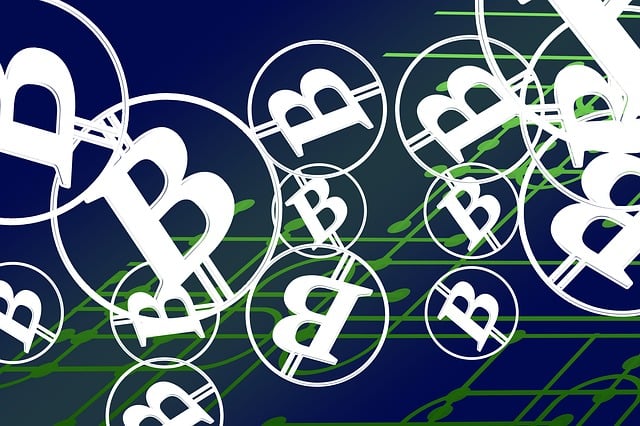Blockchain Transaction Process Diagram Explained Clearly
Author: Jameson Richman Expert
Published On: 2025-10-28
Prepared by Jameson Richman and our team of experts with over a decade of experience in cryptocurrency and digital asset analysis. Learn more about us.
Blockchain transaction process diagram helps developers, analysts, and crypto users visualize how a single transaction moves from creation to final confirmation on a distributed ledger. This article explains the complete lifecycle of a blockchain transaction with a clear, step-by-step process diagram (textual and conceptual), practical examples (Bitcoin vs Ethereum), security and optimization tips, useful tools for visualization, and actionable guidance for developers and traders.

Why a transaction process diagram matters
A well-defined blockchain transaction process diagram translates the technical flow of events (creation, signing, broadcast, validation, block inclusion, confirmation, and finalization) into an understandable sequence. This is crucial for:
- Developers building wallets, smart contracts, or nodes
- Security auditors assessing risks like double-spend or replay attacks
- Traders and users who want to optimize fees and confirmation time
- Product teams designing UX for on-chain interactions
High-level blockchain transaction process diagram (textual flow)
Below is a compact, readable transaction flow diagram you can use as a baseline. Treat each numbered step as a node in the diagram; arrows indicate the direction of flow.
1. Transaction Created (construct TX with inputs/data) ↓ 2. Transaction Signed (private key cryptographic signature) ↓ 3. Transaction Broadcast (to peer-to-peer network) ↓ 4. Mempool (pending pool of unconfirmed TXs on nodes) ↓ 5. Validation & Consensus (miners/validators check TX) ↓ 6. Block Inclusion (TX bundled into a block) ↓ 7. Propagation (block propagated to network) ↓ 8. Confirmations (block depth increases) ↓ 9. Finality & State Update (account balances/UTXOs updated) ↓ 10. Indexing & Exploration (block explorers/analytics)
Step-by-step explanations
- Transaction Created: A user constructs a transaction—this could be a payment, token transfer, or smart contract call. For UTXO chains (Bitcoin), inputs reference previous outputs. For account-based chains (Ethereum), transactions include nonce, gas limit, gas price, call data, etc.
- Transaction Signed: The sender signs the transaction with their private key. The signature proves ownership of funds and authorizes the state change. Never share private keys.
- Transaction Broadcast: The signed transaction is broadcast to the P2P network via a node or third-party API/gateway.
- Mempool: Nodes receive the transaction and, after basic validation (format, signature), place it into the mempool, where it awaits inclusion in a block. Fee level influences prioritization.
- Validation & Consensus: Miners/validators pick transactions from their mempool and validate them as part of the consensus algorithm (Proof of Work, Proof of Stake, etc.). This includes checking signatures, double-spend protection, and gas/account balances.
- Block Inclusion: Valid transactions are included in a newly minted block (PoW) or proposed block (PoS). Inclusion order is typically fee-driven.
- Propagation: The newly created block is propagated across the network and other nodes update their local chain if the block is valid.
- Confirmations: Each block added on top increases the confirmations for included transactions. Many services require N confirmations before considering a transaction final (commonly 6 for Bitcoin; fewer for other chains depending on finality characteristics).
- Finality & State Update: After sufficient confirmations or protocol-level finality, the state change is irreversible for practical purposes. On chain like Ethereum, finality may be probabilistic (PoW) or deterministic (some PoS designs).
- Indexing & Exploration: Block explorers and indexers parse blocks and transactions, enabling users to query transaction status, view logs, token transfers, and internal calls.
Detailed diagram differences: Bitcoin vs Ethereum
Understanding the differences helps when drawing a specialized blockchain transaction process diagram for each chain.
Bitcoin (UTXO model)
- Transaction references unspent transaction outputs (UTXOs) as inputs.
- Structure: inputs, outputs, locktime, version, scripts (scriptSig/scriptPubKey).
- Fees are relative to transaction size (satoshi/byte).
- Confirmations are used for finality; double-spend protection via chain weight.
Ethereum (account model)
- Transaction includes nonce, recipient, value, gas limit, gas price (or EIP-1559 base fee + tip), and data for smart contract calls.
- Fees are paid in gas; EIP-1559 adjusts base fee per block dynamically.
- Smart contract interactions can produce internal transactions and events which are indexed separately.
Example: transferring 0.1 BTC vs calling ERC-20 transfer
In Bitcoin, the wallet builds a TX that spends a UTXO of sufficient value, sets outputs (recipient + change), signs inputs, and broadcasts. Fees depend on size. In Ethereum, the wallet constructs a transaction to the token's smart contract transfer method, sets gas and tip (post-EIP-1559), signs it, and broadcasts. The transaction triggers a state change in the ERC-20 contract when mined.

Visualizing transactions: tools and explorers
To see a live blockchain transaction process diagram in action, use block explorers and developer tools:
- Etherscan — Ethereum transaction trace, internal transfers, and contract logs.
- Blockchain.com Explorer — Bitcoin transaction and block details.
- Wikipedia — Blockchain — foundational conceptual background.
- Bitcoin Whitepaper — original design and rationale behind Bitcoin's transaction model.
These tools let you inspect raw transaction hex, signatures, confirmations, and block inclusion time — useful for debugging wallets or confirming payments.
How consensus and miners/validators affect the diagram
The consensus mechanism inserts critical stages into the diagram:
- Proof of Work (PoW): miners expend computational work to propose a block; propagation and reorg risk must be considered.
- Proof of Stake (PoS): validators propose/attest blocks; finality rules may remove probabilistic uncertainty faster.
These details determine confirmation policies. For example, applications with strict instant requirements should consider layer-2 solutions or custodial services that provide faster user experience albeit with trade-offs.
Security considerations and attack vectors
When documenting a blockchain transaction process diagram, include the following security nodes:
- Private key safety: Key compromise undermines signature authenticity. Use hardware wallets (cold storage) for significant funds.
- Replay attacks: Occur on chains with forks—nonces or chain IDs help prevent replays. Account models use chain IDs (EIP-155).
- Double-spend: Attempting to spend the same UTXO twice. Achieved by broadcasting competing transactions with higher fees or exploiting latency.
- Front-running & MEV: Miners/validators or bots may reorder transactions for profit. Consider gas strategies or private transaction relays to reduce MEV exposure.
- Smart contract vulnerabilities: Reentrancy, integer overflow/underflow, access control failures — important for contract calls in transactions.

Optimizing transaction performance and fees
Practical tips to improve inclusion speed and reduce cost:
- Set appropriate fees: Use real-time fee estimators in wallets to choose appropriate gas/fee based on current mempool pressure.
- Use batch transactions: When sending multiple transfers, batch them into a single transaction (where protocol supports it) to save fees.
- Leverage L2 solutions: Rollups (Optimistic, ZK) reduce layer-1 fees and deliver faster finality for many use cases.
- Time transactions: For non-urgent operations, schedule during low network congestion.
- Monitor mempool: If a transaction gets stuck, consider fee bumping mechanisms (replace-by-fee for Bitcoin or speed up/cancel for Ethereum via wallet features).
For trading and exchange fee comparisons that can affect your overall cost of on-chain operations (withdrawals, futures margining, etc.), consult up-to-date fee guides. See a detailed Binance futures fee reference and other fee explanations for context:
Practical developer checklist: building a transaction flow diagram
If you are documenting or building a transaction flow for a dApp, wallet, or node, include the following components:
- Data model for transactions (fields, types)
- Signing flow and key management (hardware, software, custodial)
- Broadcast strategy (relay nodes, peer connections, third-party APIs)
- Mempool handling & retry rules
- Fee estimation and bumping logic
- Confirmation tracking and finality thresholds
- Indexing and events logging for UX (notifications, receipts)
- Error handling (invalid nonce, out-of-gas, revert reasons)
Reading and interpreting transaction details
When you inspect a transaction in a block explorer you’ll typically see:
- Transaction hash (txid) — unique identifier
- Block height and timestamp — when included
- Confirmations — number of blocks since inclusion
- From / To addresses — sender and recipient (or contract address)
- Value and fee — transferred value and fee paid
- Gas used and gas price (Ethereum) — cost details
- Input scripts / internal transactions — for contracts
Explorers like Etherscan offer internal traces and decoded logs that help visualize complex contract calls. For low-level protocol research, the original Bitcoin paper and the blockchain Wikipedia article are excellent authoritative references: Bitcoin whitepaper, Blockchain — Wikipedia.

Use-cases and applied examples
Below are common scenarios and how they fit into the transaction diagram.
Peer-to-peer payment
User A sends funds to User B. The wallet constructs, signs, and broadcasts. The transaction waits in mempool, then miners include it in a block. After sufficient confirmations, User B’s wallet shows the final balance.
Smart contract interaction (e.g., token swap)
User initiates a swap on a DEX. The transaction calls the smart contract, which executes multiple internal transfers and events. The explorer will show the top-level transaction and internal token transfers triggered inside the contract.
Exchange deposit/withdrawal
When withdrawing from an exchange, the exchange constructs and signs the on-chain transaction (or uses batch withdrawals). Exchanges often batch many withdrawals into single transactions for efficiency. If you’re evaluating exchanges, check withdrawal fee policies and speed — see curated guides and picks to choose platforms and strategies: crypto picks and trading strategy guide.
Off-chain payments and cards
Some payment cards (e.g., Bybit card) integrate crypto-to-fiat conversion and can be used on merchant sites. While payment cards don’t alter the core blockchain transaction lifecycle, they introduce off-chain steps (conversion, settlement) that should be reflected in your broader payment flow diagram. Read in-depth compatibility and usage analyses such as this Bybit card compatibility article for more context: Bybit card compatibility and optimization.
Regulatory, religious and ethical considerations
Some users evaluate crypto activities against religious guidelines (e.g., halal/haram considerations for margin trading). If your flow includes margin products or borrowing, document how those products operate on-chain and off-chain. For example, review discussions about spot and margin trading and religious perspectives here: Is spot/margin trading halal? — Islamic guide (2025).

Monitoring, alerts, and post-transaction workflows
Operational systems should track these events and trigger alerts:
- Transaction not found / rejected by nodes
- Transaction stuck in mempool (low fee)
- Block reorg that drops a previously confirmed transaction
- Successful confirmations and finality
Implement webhook processors or use services such as Alchemy, Infura, or public nodes for reliable event delivery and indexing. Block explorers and analytics services provide APIs for programmatic checks as well.
Designing the graphical diagram (best practices)
When converting the textual flow into a graphical blockchain transaction process diagram:
- Use clear swimlanes: user wallet, node/mempool, miners/validators, block storage, explorer/indexer.
- Label data payloads: raw tx hex, signature, nonce, gas, UTXO references.
- Annotate time and fee influences: expected confirmation latency vs fee paid.
- Draw alternative paths: stuck tx -> replace-by-fee, chain reorg -> reorg handling, failed TX -> revert reasons.
- Include security checkpoints: key management, signature verification, nonce checks.
Frequently Asked Questions (FAQs)
How many confirmations are enough?
It depends on chain and risk tolerance. Bitcoin commonly uses 6 confirmations for high-value transfers. Ethereum and PoS chains vary; some applications treat finality after fewer confirmations or consensus finality events. Always define confirmation thresholds in your product’s risk model.
Why do transactions sometimes take hours?
High network demand and low fee settings cause transactions to be deprioritized in the mempool. You can speed such transactions by increasing fees or using replace-by-fee / speedup features if supported.
Can I cancel a transaction after broadcasting?
Not strictly — on-chain transactions cannot be “cancelled.” You can attempt to replace it with an equivalent transaction with the same nonce and higher fee (Ethereum) or use RBF for Bitcoin if supported by the wallet.

Actionable checklist for users and developers
Use this checklist to implement, debug, or teach the blockchain transaction flow:
- Document fields for transactions (UTXO vs account)
- Implement deterministic signing and avoid key export
- Attach robust fee estimation and fee bumping strategies
- Create monitoring for mempool, confirmations, and failed transactions
- Use hardware wallets for production signing where appropriate
- Provide user-facing UX for expected confirmation times and fees
- Integrate block explorer links for user verification (Etherscan, Blockchain.com)
Where to learn more — resources and readings
- Blockchain (Wikipedia) — conceptual background and related topics.
- Bitcoin whitepaper — foundational reading.
- Ethereum developer docs — transaction internals and gas model.
- Use practical exchange resources when transacting on or off exchanges. For fee-aware trading and exchange selection, check guides like Binance futures fee guide, and Futu trading fee explained.
- For trading strategy cues, read curated insights on asset selection: What crypto to buy now — smart strategy.
- If you rely on cards or merchant compatibility, consider detailed analyses such as Bybit card compatibility guide.
Recommended exchanges and registration
If you plan to interact with the market (deposits, withdrawals, trading), consider reputable exchanges. Use the links below to register if you want to start quickly (affiliate/referral links):

Final notes and next steps
A clear blockchain transaction process diagram is a powerful tool for product teams, developers, and stakeholders. Use the textual diagram above as a template and adapt it to your chain (UTXO vs account), consensus model (PoW vs PoS), and application needs (payments, DeFi, NFTs). Combine that with monitoring, robust fee management, and secure key handling to create a reliable on-chain user experience.
For additional reading on practical exchange costs and trading nuances that may affect your on-chain operations (withdrawal economics, fees, and operational practices), see the curated guides and analyses referenced earlier. Implement best practices, test with small values, and instrument good logging and alerting to detect problems early.
If you want a custom graphical transaction process diagram (SVG/PNG) tailored to your product (wallet, exchange, or dApp), provide the target chain, consensus model, and whether smart contracts are involved — and I’ll create a detailed, export-ready flow diagram you can use in documentation or onboarding.